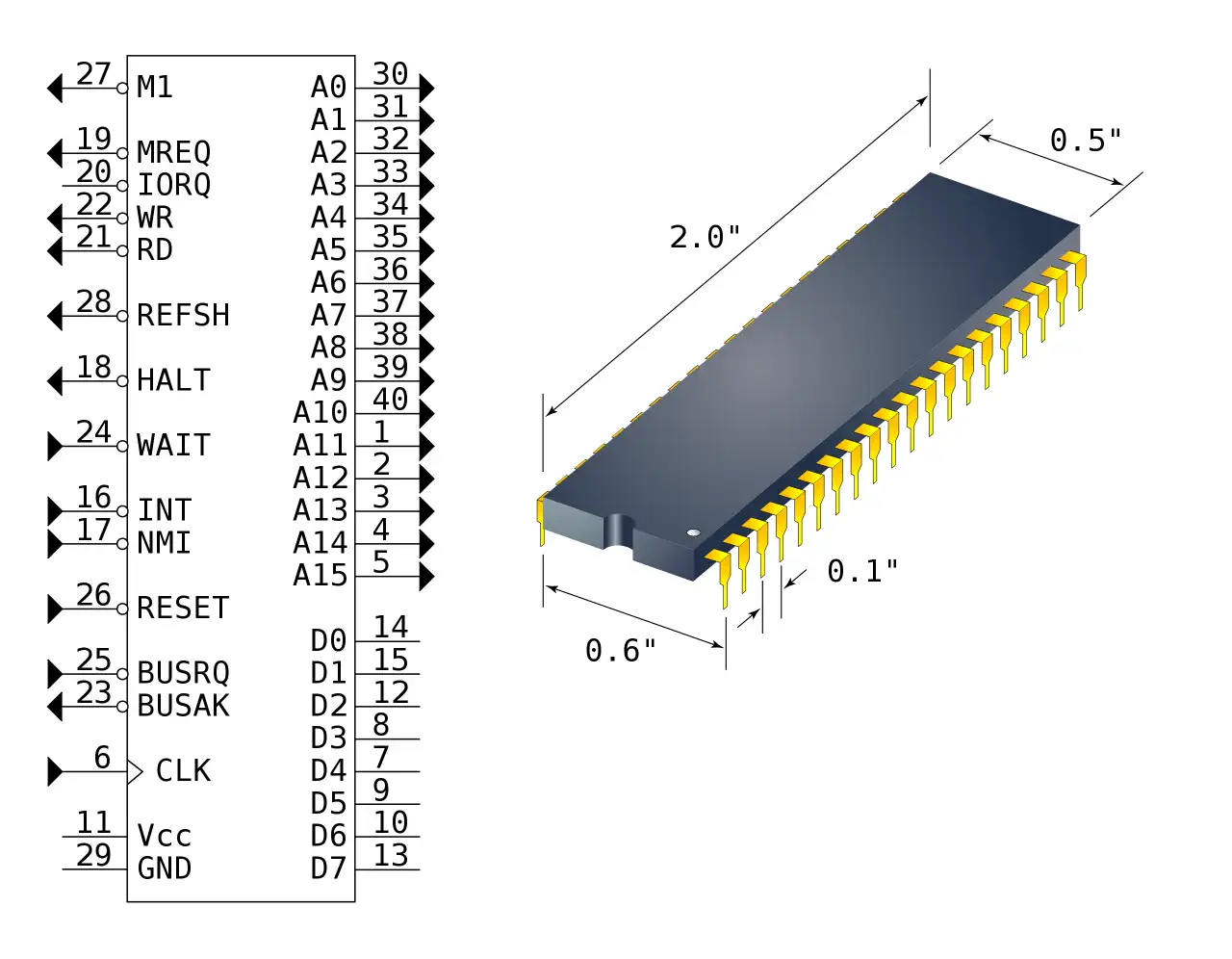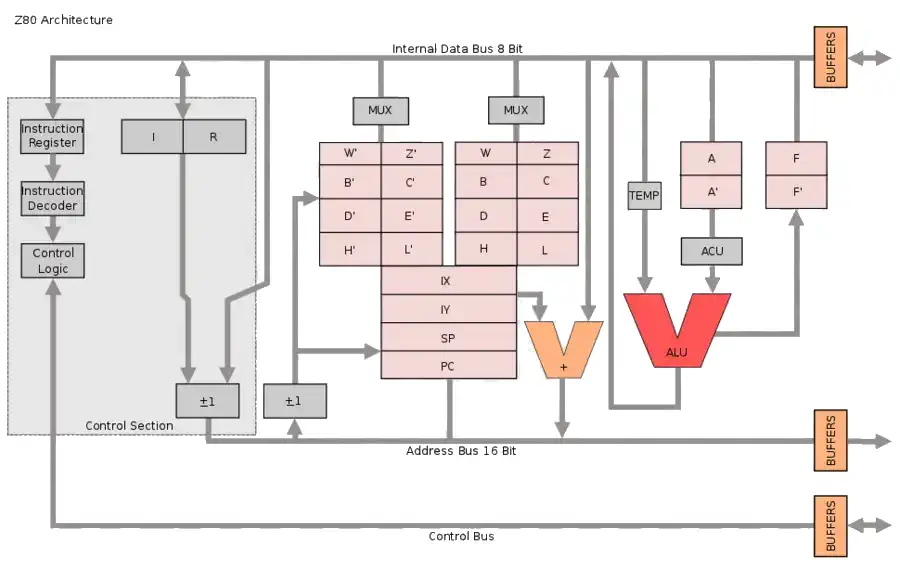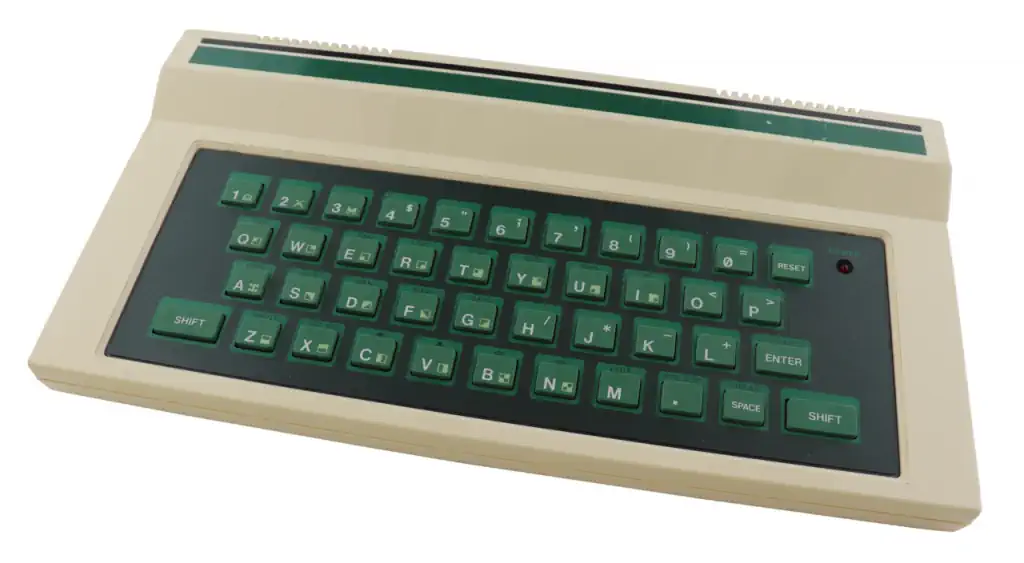The Lambda 8300 - a Timex Sinclar ZX81 clone
The Lambda 8300 was a Sinclair ZX81 clone. It was available in the United States as the PC8300. The machine was developed by Lambda Electronics Ltd from Hong Kong. The ROM was a modified version, and the machine had some extra hardware, making the machine not fully compatible.
The 8300 came with 2kByte RAM, which could be expanded to 32kBytes. The ROM contained extra semigraphic characters. The ROM could be swapped out for a real ZX81 ROM for complete compatibility. Additionally, a custom ROM was developed by Fred Nachbauer. He used a modified Timex/Sinclair 1000 ROM. The PC8300 ROM was a 24-pin 8K ROM, and the newly adapted ROM was an 28pin EPROM. The extra pins had to be removed so that the ROM could be used in the Lambda 8300. This ROM achieved about 90% compatibility.
Zilog Z80 CPU Family
The Z80 quickly became popular in the personal computer market, with many early personal computers, such as the TRS-80 and Sinclair ZX80, using the Z80 as their central processing unit (CPU). It was also widely used in home computers, such as the MSX range, SORD, and the Amstrad CPC, as well as in many arcade games. Additionally, it was also used in other applications such as industrial control systems, and embedded systems. The Z80 was widely used until the mid-1980s, when it was gradually replaced by newer microprocessors such as the Intel 80286 and the Motorola 68000.
The Z80 microprocessor was developed by Zilog, a company founded by Federico Faggin in 1974. The Z80 was released in July 1976, as a successor to the Intel 8080. It was designed to be fully compatible with the 8080, but also included new features such as an improved instruction set, more powerful interrupts, and a more sophisticated memory management system.
The Z80 quickly became popular in the personal computer market, with many early personal computers, such as the TRS-80 and Sinclair ZX80, using the Z80 as their central processing unit (CPU). It was also widely used in home computers, such as the MSX range, SORD, and the Amstrad CPC, as well as in many arcade games. Additionally, it was also used in other applications such as industrial control systems, and embedded systems. The Z80 was widely used until the mid-1980s, when it was gradually replaced by newer microprocessors such as the Intel 80286 and the Motorola 68000. The design was licensed to Synertek and Mostek as well as the European SGS.
The Z80s instruction set is binary compatible with the Intel 8080, so that 8080 code such as the CP/M Operating System and Intel's PL/M compiler for the 8080 can run unmodified on the Z80. The Z80 had many enhancements over the 8080 such as 16-bit data movement instructions, block copy and block I/O instructions, single bit addressing of all registers, IX/IY offset registers, better interrupt system and a complete duplicate register file for context switching during an interrupt.
Source: WikiPedia

RAM max: 32kB Sound Chip C4005 ULA I/O Sound Three octaves, single voice Display Chip none Display 32x24 text, 64x44 pseudo graphics (using block characters) Best Color monochrome Best Graphics 64x44 pseudeo graphics Sprites none System OS Sinclair BASIC Storage External Tape


